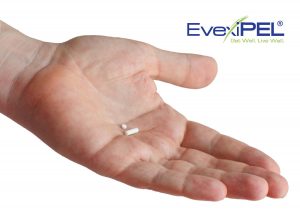
When it comes to treating hormonal imbalance, there is no uniform approach. Yet, many in the medical field continuously prescribe “band-aid” treatments that may work for some, but don’t offer patients optimal results, nor do they address their full scope of health concerns and symptoms.
Hormonal imbalance can come from various sources, but no matter the cause when left untreated, the consequences can be severe. One approach many practitioners use to help patients find balance is bio-identical hormone replacement therapy (BHRT).
While BHRT has been around for years and had great results, we have seen a resurgence in its use. Read on for all things BHRT, hormone pellet therapy, and how you can improve your health!
What is Hormone Replacement Therapy?
HRT is a type of hormone therapy that uses hormones that are structurally identical to the substances as they naturally occur in your body. It has been a favorite for both men and women going through the aging process and dealing with hormonal imbalance.
Other hormone therapy options include pills, patches, and creams, but don’t offer an individualized approach for your unique needs and health concerns. BHRT is the natural alternative to synthetic hormone treatments that often don’t provide relief.
We use BHRT through hormone pellet therapy. Hormone pellets have been around for decades but were pushed aside when pills and patches flooded the market.
However, many practitioners are turning back to hormone pellet therapy to offer their patients a more individualized approach to restoring balance and optimizing hormones.
What Are Hormone Pellets?

Designed for both men and women, hormone pellets are roughly the size of a grain of rice and composed of an estrogen hormone or testosterone.
They come from organic plant materials that mimic the molecular structure of those hormones found in the body. And, these tiny pellets are inserted under the skin, usually in the buttocks, in a simple and painless in-office procedure.
How Do Hormone Pellets Work?
The pellets release small amounts of hormones directly into the bloodstream similar to the way your body would in previous years.
Also, the pellets will release the hormones in response to physical activity or emotional stress, both the good and bad kind. They also allow for a steady stream of hormones, which can help curb symptoms and side effects of your hormone levels.
What Are the Pros of Hormone Pellets?
BHRT with pellets is preferred by many patients thanks to its incredible convenience. Rather than remembering to take daily pills or apply cream throughout the day, most patients need only to visit their practitioner 2-3 times per year for pellet implants. With hormone pellets, you can truly restore order to your life!
Are There Any Cons of Hormone Pellets?
For some patients, the idea of a procedure can be scary. Though the insertion method is painless and straightforward for most, there is always a possibility for discomfort.
Also, there is a little downtime required post-insertion; you should not practice any strenuous physical activity or have prolonged water exposure for the first few days after implantation.
Finally, BHRT with pellets can be slightly more expensive than other forms of hormone therapy, but it is also recognized as more reliable and valuable.
Is Hormone Pellet Insertion Painful?
Most patients experience no pain with their hormone pellet insertion. However, to help alleviate any discomfort, a local anesthetic is applied to the insertion site before the procedure.
Tenderness, redness, and a little bruising is standard up to 3-4 days after insertion, but the entire process is viewed as quick and painless.
How Long Does It Take for Hormone Pellets to Work?
Although every patient experience is unique, most report symptom relief within 2-4 weeks, but full hormone optimization could take closer to 6 months.
Which is why regular follow-up and contact with your BHRT pellet provider is vital following the procedure; this allows your provider the opportunity to monitor and customize hormone optimization based on your symptoms and blood work.
Comprehensive Blood Tests
After talking to an EvexiPEL provider and deciding pellet therapy is a great option or you, we will have you go through blood work to determine the best levels of hormones for you.
This is an extremely important step in the process, as each patient’s hormone needs and blood levels are different.
Pre-Procedure Steps
Once you’ve done your blood tests and we have determined the proper dosage of hormone pellets to give you, there are a few steps you can take before the actual pellet insertion.
We recommend that all patients stop taking blood thinners (aspirin, acetaminophen, ibuprofen) one week before the insertion.
If your physician has instructed that you take any of these daily, you should consult with him or her. Bio-identical hormone replacement therapy does not require any pre-procedure fasting.
The Procedure
The day has finally arrived! Before you come into our office to have the procedure done, we will have created customized pellet(s) for you by fusing estrogen or testosterone into small cylindrical pellets.
These pellets are very small – about the size of a grain of rice. Once you come in, we will clean and numb the site of pellet insertion.
Pellets absorb best when inserted into fatty tissue, so the most common site of insertion is the rear end. After you are numb, we will make a very small incision through which to insert the pellets.
We will then put the pellets in, cover the site with a bandage, and you are good to go! The whole process does not even take 20 minutes.
Post-Procedure Steps
We recommend that you remove the initial bandage 24 hours after the procedure, and reapply bandages as needed over the next few days. It is also recommended to keep the wound completely dry for the first 24 hours – after that, go ahead and shower.
However, we recommend staying out of baths, pools, hot tubs – or anywhere else that you might soak the wound in – for at least three days following the insertion.
To avoid irritation, it is also a good idea to refrain from extraneous exercise (anything beyond your regular walking and work around the house) for about a week following the procedure.
A week or so after the procedure, you should be able to remove the bandage and start to get back to your regular activity.
If you are still feeling intense irritation or pain two weeks after the procedure, give us a call. Keep in mind, though, some redness, bruising, and swelling is normal for a few days following pellet insertion. The area may feel tender for up to two weeks after insertion.
What Happens to My Body After Hormone Pellet Insertion?
There is usually an adjustment period after undergoing pellet therapy. As the pellet releases hormones into your body, your body may have to play “catch up” for a few days as it adjusts to normal hormone levels.
This can come in the form of temporary weight gain, or other body changes such as breast tenderness or toning. You may also experience mental and emotional changes – some patients report feeling very mild, puberty-like symptoms for a few days.
After this initial recovery period, you should start to notice the positive changes in your body you were hoping for.
This can include any combination of getting better sleep, having more energy, being happier, stronger, and much more. The pellets will continue to release hormones into your bloodstream 24/7 for their allotted treatment time.
Since the hormones are identical to those your body produces, your body should accept them happily with no adverse side effects.
Contact Us Today!
Our hormones are just as unique as we are. So, finding the best treatment path to help you achieve balance requires time and collaboration.
Schedule your consultation today to speak with one of our hormone experts and take the first step toward restoring balance!
Article Reviewed By The Medical Faculty and Advisory Review Board
Resources
- Image attribution.
- Hormone Replacement Therapy
- Hormone therapy: Is it right for you?
- Menopausal Hormone Therapy and Cancer
- Which Type of Estrogen Hormone Therapy Is Right for You?
- Hormone Therapy: Benefits & Risks
- Benefits of hormone replacement therapy
